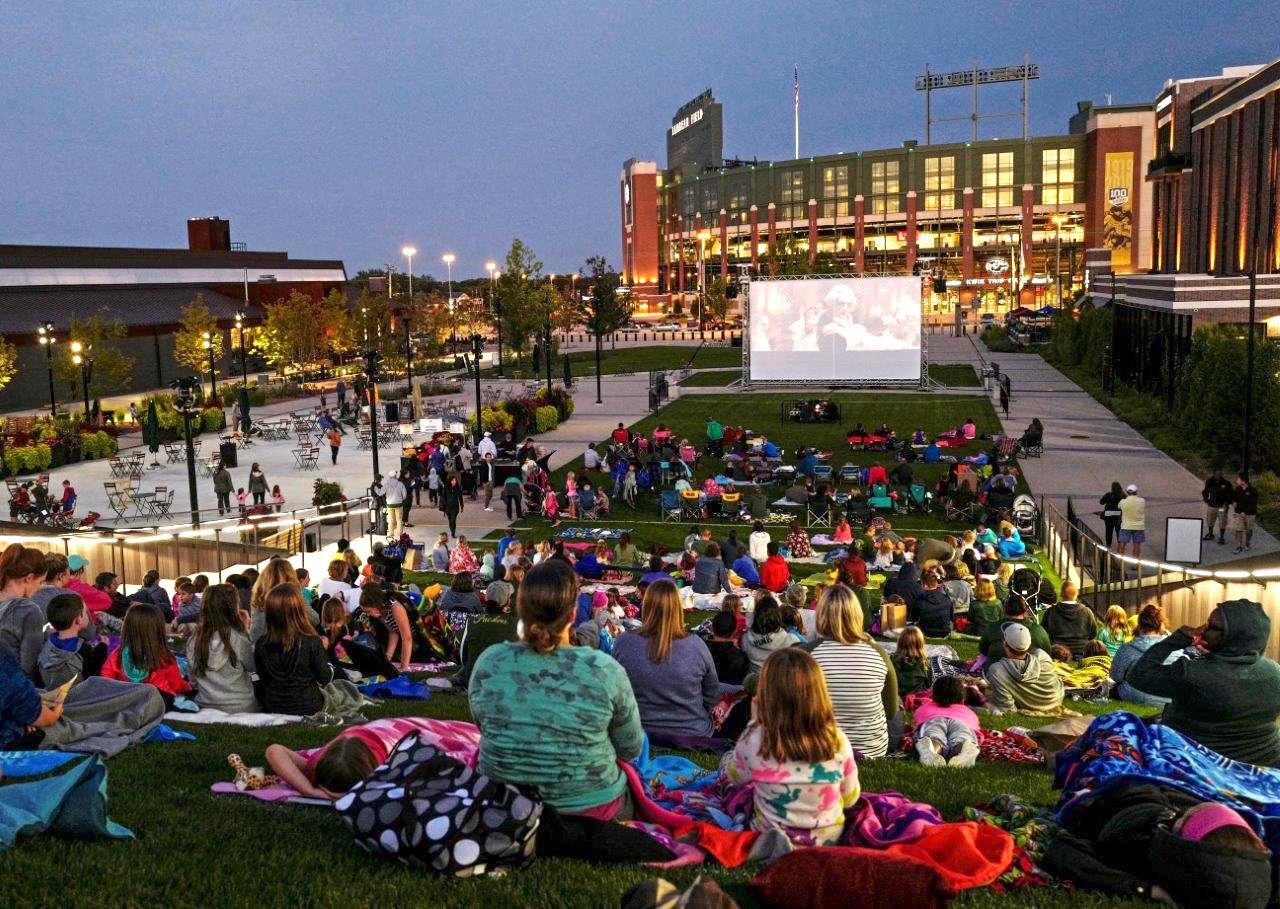
No game, no problem. During warm nights, residents of Green Bay and surrounding areas still come to Lambeau Field’s Titletown to watch outdoor movies. Who needs football? Photo courtesy of Green Bay Packers
By Mary Bergin
Winning seasons pack arenas in every sports town, but that’s only the start of the story at Lambeau Field, home to the Green Bay Packers since 1957. What started as simply a place to play during the NFL football season has grown into a multi-purpose district with year-round reasons to visit.
Developments that embrace sports and other ways to entertain are growing from Baltimore to Los Angeles to Dallas to Chicago and certainly not limited to one type of pro sport.
The Packers and their fans were an anomaly, ripe for a wider relationship, long before plans were announced in 2015 for the Titletown District, just west of the stadium in Ashwaubenon, a Green Bay suburb.
Packerland pride carries a sense of ownership, literally: devotees in 2021 bought more than 165,000 common stock shares at $300 each, the sixth time since 1923 that stock was sold to help finance team and stadium improvements.
No other major pro sports team is publicly owned. No stadium built for an NFL team has been used longer. No NFL city is smaller. At least 100,000 names are on the season ticket waiting list, a list unbroken since 1960.
Making Green Bay a Year-Round Destination
Now the $300 million Titletown District is transforming 45 acres into an all-year playground and economic booster. Anchors include Lodge Kohler, an edgy boutique hotel with water-based and other spa services; Bellin Health, whose sports medicine staff work with pro football players as well as the public; and Microsoft Corp., which provides capital and mentoring at TitletownTech to innovative startups focused on regional improvement.
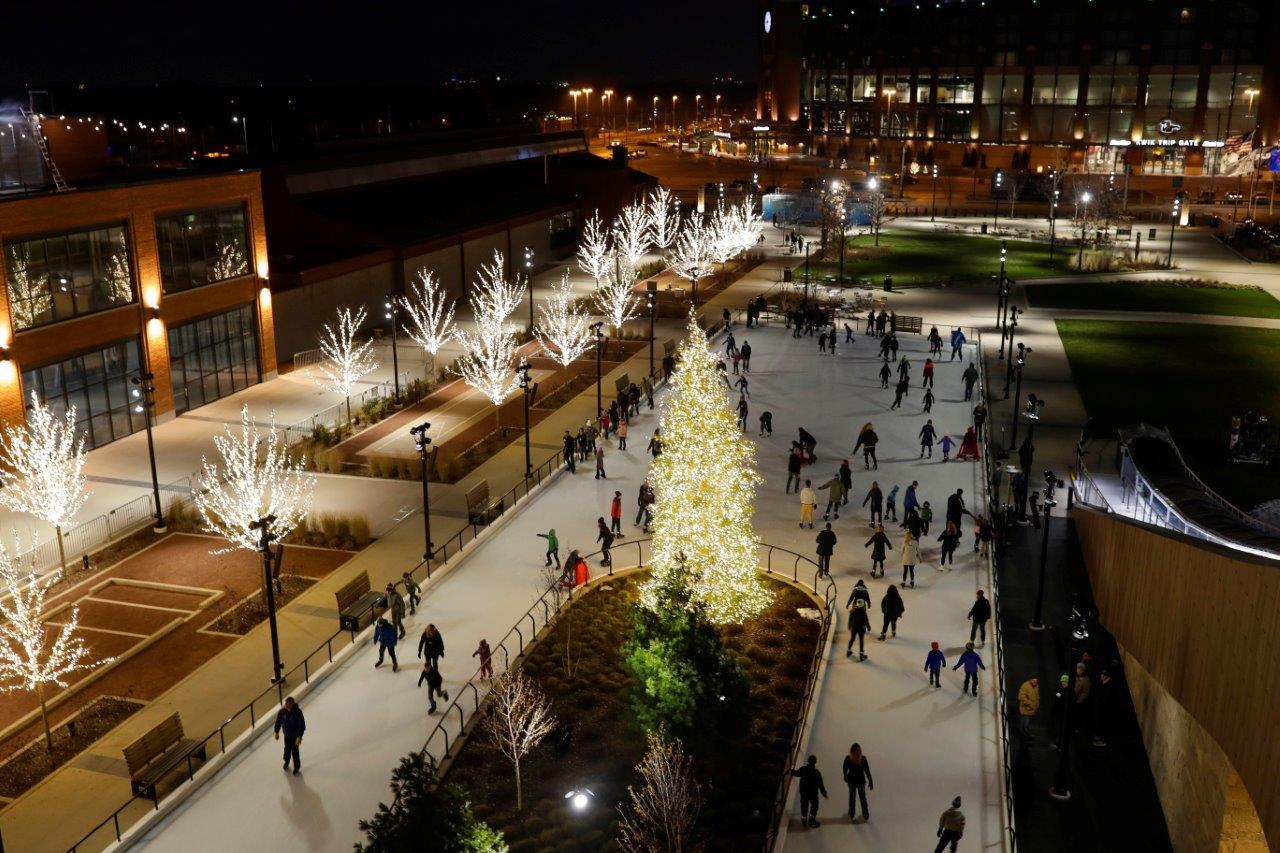
For rent at Titletown during winter are ice skates and ice bikes to use on the plaza’s skating rink, which loops under a manmade hill that is used for tubing. Green Bay Packers photo
“We felt the land to the west of the stadium was ripe for development and wanted to make sure whatever was developed would tie into the stadium,” says Charlie Millerwise, Packers’ director of development and hospitality. “To ensure that type of development, we determined we should be the ones to lead it.
“We wanted to build on the success of the redeveloped Lambeau Field and felt that a mixed-use real estate development would be a benefit to the stadium area and the community as a whole. We felt the Packers were in a unique position to lead this effort and could recruit other organizations and entities to be a part of it.”
Fitness classes and pick-up games happen in a public plaza and an athletic field with regulation-size football field, in the shadow of Lambeau. Equipment on a playground for kids has a football theme. Equipment for free and spontaneous games of horseshoes, cornhole and more are steps from Hinterland, a craft brewery with restaurant, producing Packerland Pilsner and Maple Bock.
A manmade hill in the plaza is lawn seating for outdoor movies in summer and the perfect snow-covered terrain for tubing in winter. Underneath is an ice-skating rink. In warmer weather, a weekly night market brings food and craft vendors.
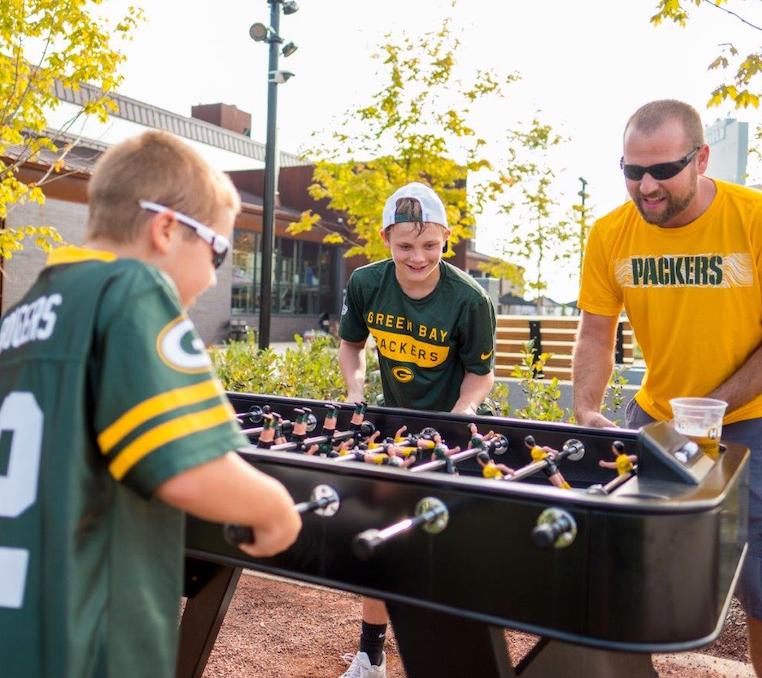
Titletown is all about having fun. During nice weather, families or visitors into a little competition can play foosball outdoors. Other options include horseshoes, shuffleboard, cornhole, bocce ball and ping pong. Green Bay Packers photo
“It broadens the attraction of the Lambeau Field area as a year-round destination with activities beyond football and gameday weekends,” Millerwise says. “We feel it will be our most impactful economic development effort, long-term, for the community, especially with the promising companies working with TitletownTech.”
Next come office, retail and residential developments, which will turn Titletown into a neighborhood. “We have additional residential land to be developed; it may be more townhomes or more apartments, depending on the demand,” Millerwise says. “We also have about 100,000 square feet of commercial space that will be developed.”
The Deer District
Roughly 120 miles south, the 2018 opening of multi-purpose Fiserv Forum arena in downtown Milwaukee was the cornerstone for the new, $524 million and 30-acre Deer District. Fiserv Forum is home court for the 2021 NBA Championship Milwaukee Bucks, the Golden Eagles of Marquette University and the city’s major indoor concert venue.
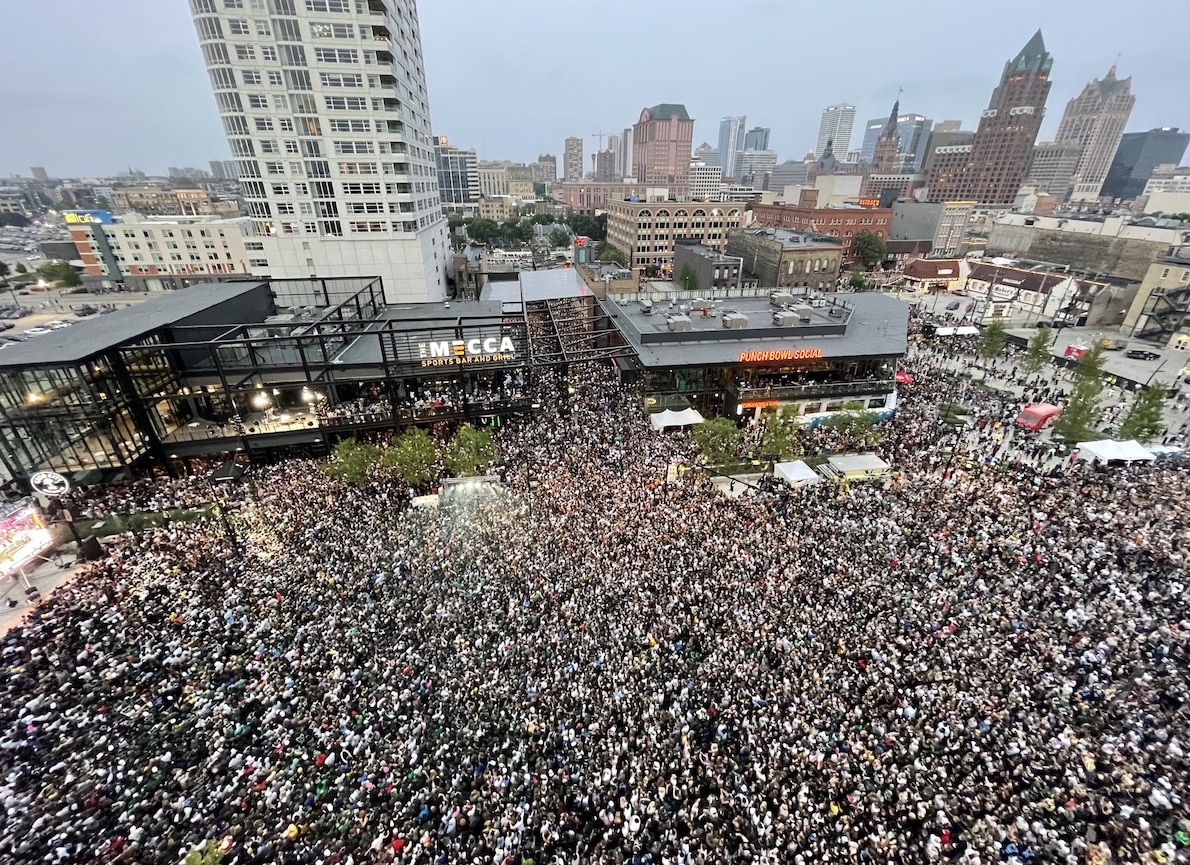
Tens of thousands packed the Deer District’s plaza to celebrate the Milwaukee Bucks’ NBA championship in 2021. Photo courtesy of Fiserv Forum
Pubs, restaurants, a craft brewery, pro shop and outdoor beer garden flank a public plaza for festivals, exercise classes and big-game gatherings. As the Bucks made their way through championship play, tens of thousands of fans filled the plaza to watch the athletic drama unfold on jumbo TV screens.
The area is pegged as Milwaukee’s newest neighborhood, and developers say online that the Deer District “strives to be a 365-day destination, serving as a hub for Milwaukee’s vibrant future and connecting our existing downtown neighborhoods.”
Around 150 arena events per year will draw visitors too, and the district is near the city’s scenic River Walk, a festive three-mile pedestrian walkway along the Milwaukee River, and popular Old World Third Street, a cobblestone thoroughfare featuring beer halls, brat houses, a spice shop and plenty of cheese curds.
“We’re trying to create a new living room for Milwaukee,” Alex Lasry, senior vice president for the Bucks, explained shortly before Fiserv Forum opened. “We’re trying to create something unique to Milwaukee and to Wisconsin.”
Outside the Lines
The L.A. Dodgers, which unveiled a $100 million stadium upgrade in 2021, prefers to categorize the project as a ballpark district development. One that preserves the old while adding modern amenities that sports fans have come to expect.
The stadium’s new two-acre Centerfield Plaza contains a playground for children, a history area honoring baseball legends such as Jackie Robinson and Sandy Koufax plus entertainment and outlets for regional foods. A bridge connects the plaza to the bleacher seats and other sections of the stadium.
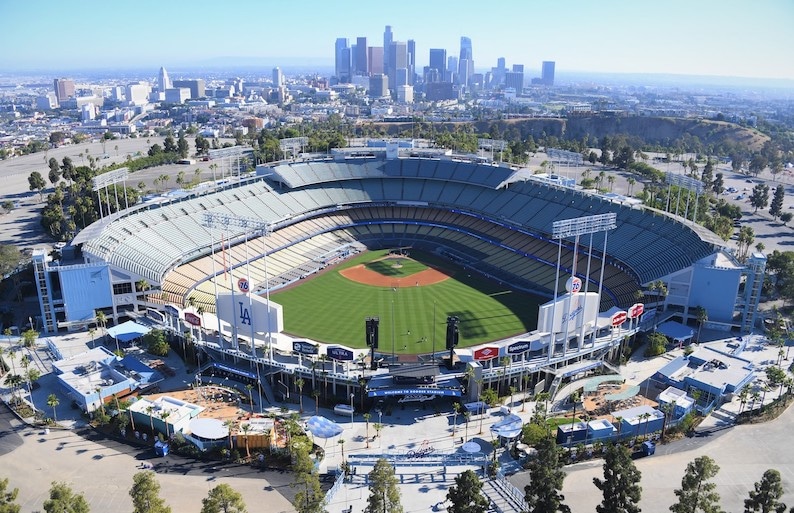
Opened at the start of the 2021 baseball season, Centerfield Plaza is a hit with fans of all ages. Most people buy a beer and a snack before the game. Many families with small children, however, spend the entire game outside the stadium watching the game on TV monitors while their children play. Photo by Jon SooHoo/Los Angeles Dodgers Photo
The architect? Janet Marie Smith, who has demonstrated time and again how to preserve sports venue heritage while incorporating profitable attractions. Her design showcases historic team artifacts while adding fun surprises. One example: Tommy’s Bar, a hidden speakeasy with floor-to-ceiling windows that allow imbibers to spy on the visitors’ bullpen.
California sportswriter Bill Shaikin calls Smith “America’s foremost ballpark designer,” one whose best-known works began with the opening of Camden Yards in 1992. The directive from Baltimore Orioles’ executives was to create a ballpark that felt like part of the neighborhood.
“The collection of attractions that were being added to Baltimore at the time was really what drove the design,” Smith told the National Baseball Hall of Fame and Museum. “It is only in hindsight that you can say it really began a new era of thinking about ballparks. It certainly wasn’t our goal, nor would we have been presumptuous enough to say, ‘We’re going to change the trend.’ We just said, ‘We want to do the right thing for Baltimore.’”
A deteriorating warehouse was a key design element for Smith, one that gave the venue personality and allowed nearby taverns (one previously owned by Babe Ruth’s father) and restaurants access to the ballpark experience. She returned in 2009 to freshen her design, adding a sculpture park containing a statue of Baltimore native Babe Ruth and a rooftop deck in center field and more.
Then came Smith’s work to convert Atlanta’s Olympic stadium into a home for the Braves in the 1990s and revamping Boston’s Fenway Park between 2002 and 2009. “Revamping,” in some circles, would be an understatement. Count the Boston Globe among those who contend Smith saved Fenway, the oldest stadium in Major League Baseball, from demolition.
Much of the Fenway project improved crumbling infrastructure, important work but not a big talking point for the average fan. But Smith introduced more, like the addition of seats on left field’s Green Monster wall and the American League’s biggest women’s restroom.
Offseason Attractions Keep Fans Coming
How important is innovative sports venue design and strategy? It is a large part of what brought the NFL’s Rams back to the Los Angeles area. SoFi Stadium, a sports and entertainment campus on a former horse racetrack, opened in 2020, cost around $5 billion and is also home to the NFL’s L.A. Chargers.
No sports venue has been more expensive. The Los Angeles Times calls it “the NFL’s crown jewel,” impressive enough to host the Super Bowl in 2022 and the NCAA’s national football championship in 2023. The stadium and attached performance center (for music, performing arts) has earned major design awards and it anchors the emerging Hollywood Park neighborhood.
The $1.42 billion Chase Center opened in 2019 for San Francisco’s Golden State Warriors and major entertainment/cultural events. The arena anchors Thrive City, an open-air mecca for dining, cocktailing and roaming through farm markets and festivals in the Mission Bay area.
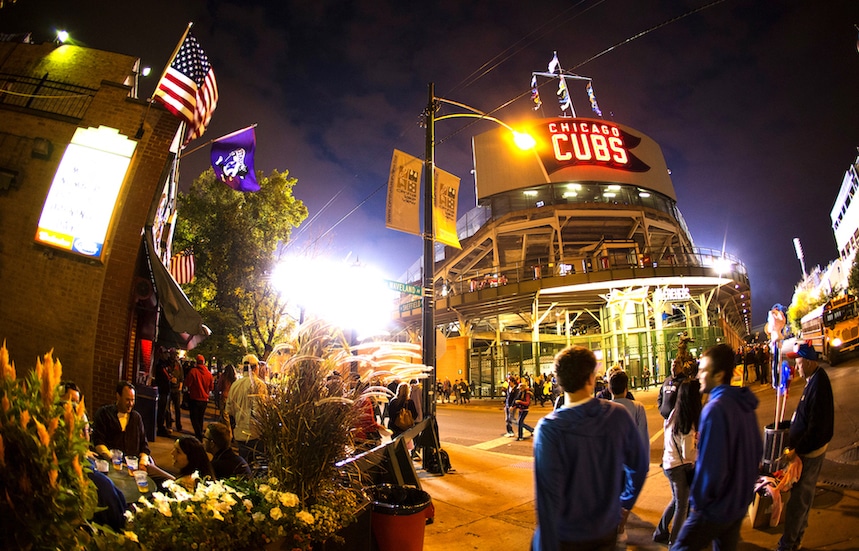
Everybody on Chicago’s North Side loves the Cubs and the entertainment district along Gallagher Way outside Wrigley Field. Photo by Adam Alexander/Choose Chicago Photo
Work on a smaller scale reaps significant benefits too. One example: Gallagher Way at Wrigley Field, a finetuning of the ballpark’s backyard and a hub for outdoor concerts, movie nights, exercise classes and outdoor vendors – all helping to expand reasons to show up beyond the baseball season. For winter: ice skating, curling, ice bumper cars. Surrounding the plaza are old-new vibes at Hotel Zachary (named after Wrigley’s architect) and indie restaurants.
Elsewhere, developments deliberately place venues for multiple sports in close, walkable proximity. Such is the case with The District in downtown Detroit, the only U.S. city since 2017 with MLB, NBA, NHL and NFL teams that play within one-half mile of each other.
A streetcar helps link Comerica Park, Little Caesars Arena and Ford Field. Also in the vicinity: Fox Theatre, Detroit Opera House, other entertainment outlets, restaurants and bars.
A Star Shines in Frisco
In 2016, Dallas Cowboys owner Jimmy Jones bought 91 acres in a little town north of Dallas called Frisco and built The Star, a headquarters for his football team located in The Ford Center. Since then more than 110,000 tourists have bought $34 tickets to tour the facility. After checking into the luxury Omni Hotel, most arrivals head to the artificially turfed football field next door in front of the Center to play catch with the kids while a Cowboys greatest hits film plays around the clock on a Jumbotron.
“We want our fans to stay at the Omni, play some pickup football, take a tour, have a photo made with a cheerleader and visit the gift shop before going out for a meal, and entertainment at the Tostitos Plaza,” says a team official. “Our business depends on making people feel part of the Cowboy family.”
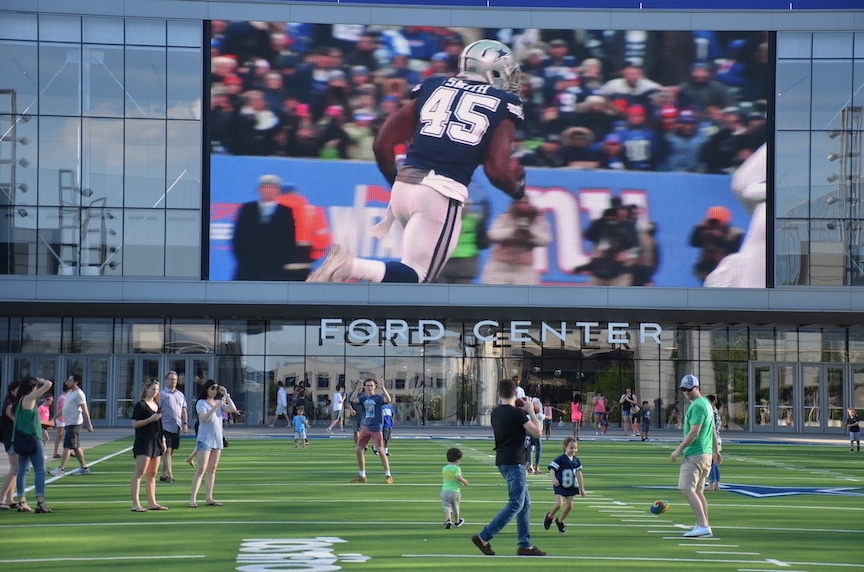
Located at the foot of a giant Jumbotron that plays Cowboys Greatest Hits 24/7/365, a regulation-sized football field is for family fun. Children love playing “real football” with Dad while their Moms watch. Next stop: margaritas on the balcony of the Omni Hotel overlooking the field. Photo be David DeVoss
Midwest Pioneer
So build it and they will come for more? That’s the hope for each of these projects, and some concepts took root decades ago. In the 1970s, city leaders in Indianapolis began talking about what they wanted Indy to be known for in 20 years.
The city was home to Indianapolis 500 car racing (since 1909), but little else. There were few reasons to visit downtown and no downtown sports venues. When the first U.S. sports commission was established in 1979, it was to make Indianapolis a national sports capital and to become known as Amateur Sports Capital of the World.
Subsequent work turned the downtown into a multi-interest destination where most attractions are within a pleasant walk of others.
Within 10 years, Indy was hosting national competitions for thousands of amateur athletes. The urban White River State Park grew into a waterfront campus of museums, art galleries and other attractions. That includes the NCAA Hall of Champions, which opened shortly after Indianapolis persuaded the NCAA to move its headquarters in 1999.
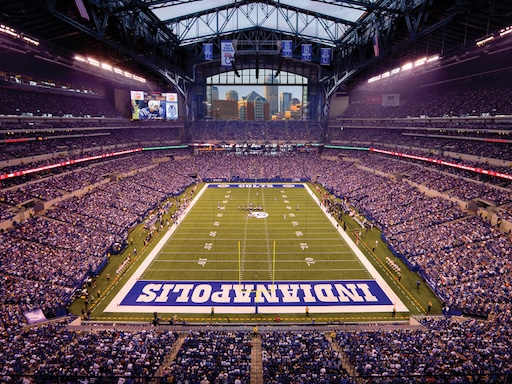
Home to the Indianapolis Colts, Lucas Oil Stadium is a venue for NFL playoff games. When football is not in season it hosts a myriad of local events and concerts. Photo courtesy of VisitIndy
Calculated risks got bolder as the city gained confidence and collateral. For instance: A 60,500-seat stadium was built in the early 1980s before Indy had an NFL team. By 2008, it was replaced by Lucas Oil Stadium, a multi-purpose facility that was 2.5 times larger. And by 2012, the otherwise modest Midwestern city was hosting the Super Bowl. ![]()
Mary Bergin is a Wisconsin native and three-time Lowell Thomas Award winner who writes about the U.S. Midwest, rural tourism and environmentally sustainable travel. She lives in Madison.

